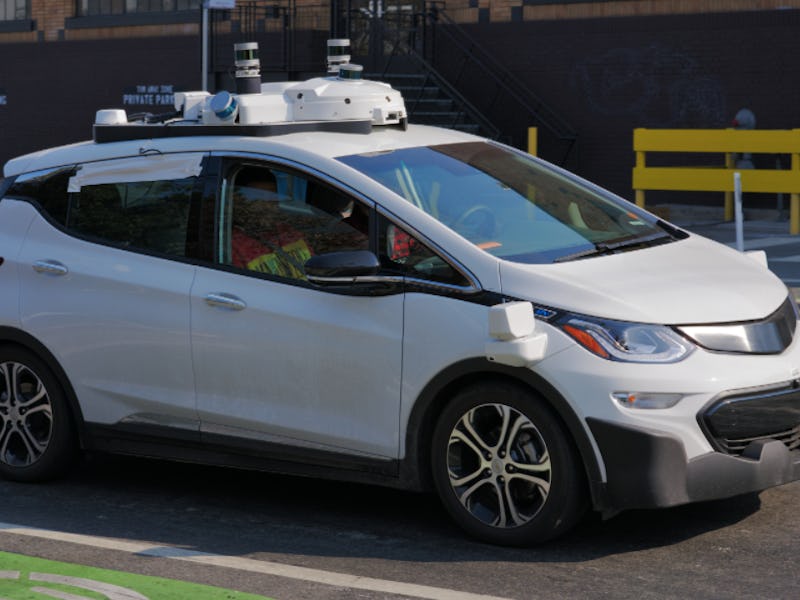GM Sued by Motorcyclist: Who Should Pay When Autonomous Cars Crash?
You can't bill a robot car, but you can charge the automaker.

General Motors is facing a lawsuit for a December traffic collision in San Francisco involving one of its autonomous vehicles and the plaintiff alleges that GM’s self-driving Chevy Bolt knocked him off his motorcycle while making an illegal lane change.
Oscar Nilsson’s lawsuit, filed on Monday, is one of the first known proceedings against an autonomous vehicle. It likely portends a wave of litigation against self-driving car producers as the vehicles cruise through adolescence. While they hope to have fully autonomous vehicles widely released in 2019, GM is currently in its testing phase, and there’s bound to be some bumps on the road.
GM’s autonomous driving technology has have a relatively clean record up to now. The vehicles were involved in 22 crashes in 2017, but all were attributed to human error. And it’s possible that crash in question in this current lawsuit might be, too.
General Motors denies culpability for the December accident, claiming that Nilsson is responsible because he made an unsafe maneuver.
“Safety is our primary focus when it comes to developing and testing our self-driving technology,” a GM spokesperson tells Inverse. “In this matter, the SFPD collision report stated that the motorcyclist merged into our lane before it was safe to do so.”\
A Chevrolet Bolt
Here is how the suit claims the incident occurred:
As Mr. Nilsson was riding his motorcycle, [Mr. Salazar, driver of the Cruze, was] travelling directly in front of Mr. Nilsson, [and] commanded the Self-Driving Vehicle to change lanes to the left.
Once the Self-Driving Vehicle cleared the roadway, Mr. Nilsson proceeded to travel straight.
However, at the same time, the Self-Driving Vehicle suddenly veered back into Nilsson’s Lane, striking Mr. Nilsson and knocking him to the ground.”
The autonomous vehicle started to change lanes, but aborted the move and returned to its previous position. The only question is whether Mr. Nilsson was driving safely when he accelerated next to the car (GM’s fault), or if he got too close, and infringed upon the car’s ability to halt a lane change (Nilsson’s fault).
It’s a classic he-said, robot-car-said situation. Nilsson is seeking damages to account for “serious injuries of body and mind and incurred expenses for medical care and attendance.” Injuries sustained in the accident caused Nilsson to take disability leave from work, so he’s claiming financial compensation. Salazar was uninjured, and the self-driving car was a bit scuffed up.
It’s a confusing time for autonomous vehicles. The lawsuit comes on the same day a Tesla driver rear-ended a fire truck in Southern California and blamed the crash on the car’s Autopilot function. A drunk driver gave a similar excuse late last week. Technically, Autopilot is a form of driver assistance, meaning the Tesla isn’t a fully self-driving car. Still, the drivers blamed it on the machine.
The robot cars are coming, and someone’s going to pay if they make mistakes. Nilsson vs. General Motors is the first step in deciding who will cover the bill.